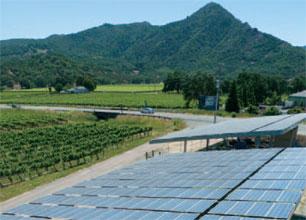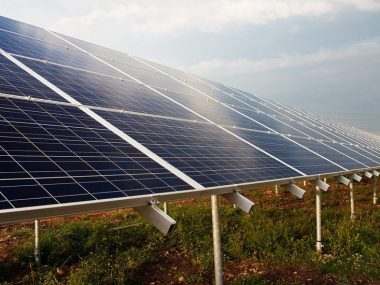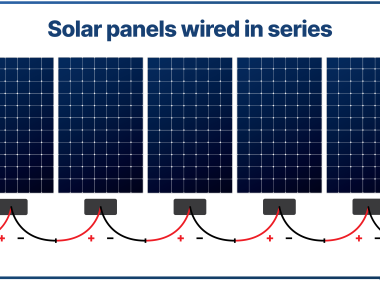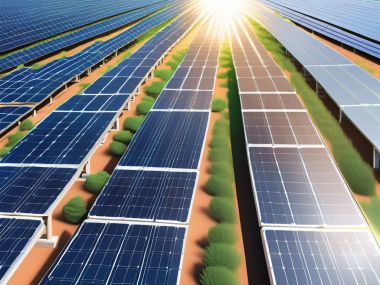Solar power is often praised for its role in promoting environmental sustainability, providing a clean and renewable alternative to conventional fossil fuels. Nonetheless, like any energy generation method, it carries its own set of environmental implications. In this overview, we’ll delve into the various ways in which solar energy interacts with the environment.
- Essentially, solar energy harnesses sunlight to produce electricity, primarily through photovoltaic (PV) panels. While celebrated for its capacity to decrease greenhouse gas emissions and combat climate change, solar energy deployment and operation can still impact the environment.
- A significant concern lies in the manufacturing process of solar panels, which entails extracting and refining raw materials like silicon, glass, and metals. Despite their abundance, extracting these materials can disrupt habitats, deplete resources, and consume energy, contributing to environmental harm.
- Moreover, the manufacturing process itself can yield emissions and pollutants, especially if fossil fuels power energy-intensive production stages. Although emissions from solar panel production are typically lower than those from fossil fuel-based electricity generation, they remain a factor in assessing solar energy’s overall environmental impact.
- Additionally, the installation of solar farms may necessitate substantial land use, potentially causing habitat loss and fragmentation, particularly in ecologically sensitive areas. Nonetheless, solar installations can often be situated on previously disturbed land or integrated into existing infrastructure, lessening their impact on natural habitats.
- Water usage is another consideration, as although solar panels do not require water for operation, it is utilized in manufacturing and panel cleaning. While the water footprint of solar energy is generally lower than that of fossil fuel-based power generation, responsible water management is still crucial.
- Lastly, managing the disposal or recycling of solar panels at the end of their lifespan poses a waste management challenge. While solar panels have a lengthy lifespan, they will eventually require replacement, necessitating careful handling and recycling to prevent environmental harm.
- In conclusion, while solar energy presents significant environmental benefits compared to fossil fuel-based energy sources, it’s important to acknowledge and address its environmental impacts across its lifecycle. By understanding these impacts and implementing mitigation measures, we can maximize the environmental advantages of solar energy while minimizing its drawbacks.
What are the environmental impacts of solar energy
The sun is a huge source of energy which has only recently been tapped into. It provides immense resources which can generate clean, non-polluting and sustainable electricity.
Also, solar power stands out as one of the cleanest and most eco-friendly forms of electricity generation. However, akin to any energy production method, it does have environmental consequences, albeit notably lesser than many other energy sources. Here are some critical environmental considerations linked with solar energy:
Resource Utilization:
The manufacturing of solar panels necessitates the extraction and refining of materials like silicon, glass, and metals. While these resources are plentiful, their extraction and processing can trigger environmental effects, such as habitat disturbance, water and energy usage, and emissions of greenhouse gases.
Pollution and Emissions:
Although solar panels themselves don’t emit greenhouse gases during operation, their manufacturing process may yield greenhouse gas emissions and other pollutants, especially if fossil fuels power energy-intensive manufacturing stages. Nevertheless, these emissions typically pale in comparison to those from fossil fuel-based electricity production.
Land Occupation:
Establishing solar farms requires land allocation for installation, potentially leading to habitat loss and fragmentation, particularly if situated in environmentally sensitive zones. However, solar installations can often be situated on previously developed land, like rooftops, parking lots, or degraded agricultural areas, thereby mitigating their impact on natural habitats.
Water Consumption:
While solar photovoltaic panels don’t rely on water for electricity generation, water is utilized in their manufacturing and for periodic cleaning. Nonetheless, the water footprint of solar energy tends to be significantly lower compared to fossil fuel-based power generation, which heavily depends on water for cooling purposes
Waste Handling:
Solar panels boast a lengthy lifespan, typically lasting 25 to 30 years or more. Upon reaching the end of their operational life, proper disposal or recycling is crucial to prevent environmental harm. Though advancements in solar panel recycling technologies are underway, challenges persist in developing efficient and economical recycling processes.
- In essence, while solar energy isn’t devoid of environmental impacts, it presents substantial environmental advantages when juxtaposed with fossil fuel-based energy sources. As technological progress continues and economies of scale reduce costs, the environmental footprint of solar energy is anticipated to diminish further, positioning it as an increasingly appealing option for sustainable electricity generation.











